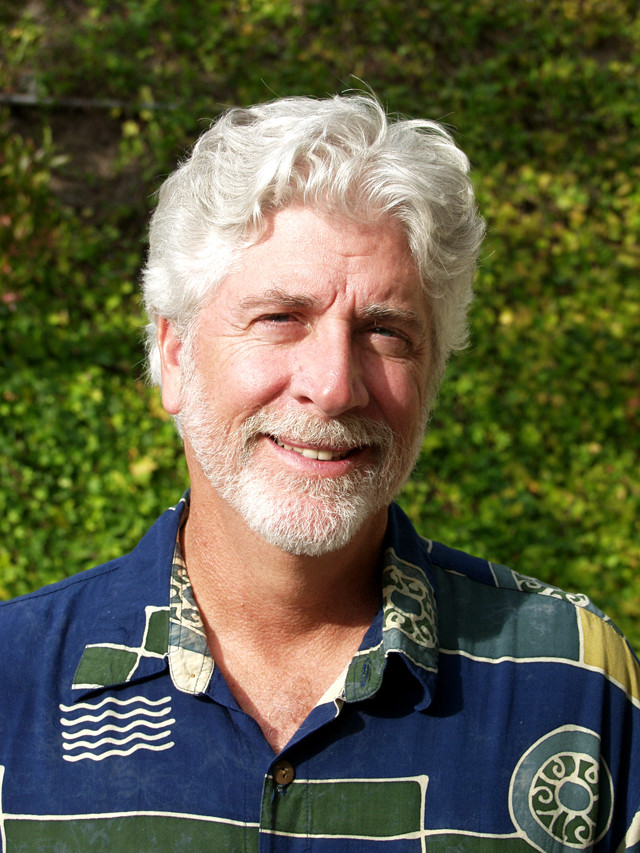
by Brian Fisher Johnson Wednesday, May 23, 2018

John Copeland. Credit: Pierre de Lespinois
Movie effects have come a long way since the close-shot model explosions that made “Star Wars” a hit, and science documentaries are no exception, says John Copeland, a director and producer who has worked on such shows as “Babylon 5,” “Dinosaur Planet” and “When Dinosaurs Roamed America.” Copeland explains to EARTH reporter Brian Fisher Johnson how TV drama and computer effects have revolutionized the way documentarians portray science.
BFJ: How many of your films have been about science?
JC: Actually, only seven out of the 35 or so pieces I’ve worked on in my career were science-based documentaries. I started briefly in feature films, then TV. But far and away, the majority of projects that I’ve worked on over the years have been dramas.
BFJ: Has your background in dramas influenced the way you do documentaries?
JC: The face of documentaries and natural science shows has changed significantly. They focus more on dramatic stories where [such stories] can be found because those resonate better with the viewing audience than just rolling out the information.
BFJ: Can you give me an example of how storytelling came into play in one of your pieces?
JC: In “Dinosaur Planet,” each episode was a story based on some sort of fossil evidence. For example, during the Jurassic, Europe was a group of islands. And one of the interesting things you have on islands is that the animals gravitate toward dwarfism or toward being giants. Well, in the ‘80s or ‘90s, a couple of paleontologists started researching some [velociraptor] bones that had been found in Romania and we thought, “My God, this could be turned into a terrific story.” Because Romania was such a seismically active area at the time, we imagined that the raptor [from the mainland] could have gotten sucked out to sea by a tsunami, then washed on to the shore of this island of dwarfs — just like “Gulliver’s Travels.” We posited all this to our team of paleontologists and they said it was possible. So you get these amazing fossil finds and you ask yourself: “How did this happen,” and that becomes the point of departure for starting to figure out how to tell a story, and how to make it dramatic. Nature gives you these dramatic moments that we as filmmakers capitalize on.
BFJ: Did you ever face resistance from paleontologists about being too dramatic?
JC: A big issue we had to watch for was investing these animals with too much emotion.
We constantly got our wrists slapped for that. The balance we would reach with our paleontologists is: any creature has an instinct for survival, so when you put them in a situation that is potentially dangerous, they’ll recognize that and be scared. We tried to incorporate momentary little hooks that would resonate with the viewer, and of course, you back that up with music.
BFJ: Can you give an example?
JC: Yeah, like when the raptor [named Pod] and his sister have been washed ashore by the tsunami. A plesiosaur comes up and snaps the sister away. You don’t see Pod looking for his sister or anything like that. He’s just freaking out because he’s concerned that he’s going to be next. But the music does have a melancholy feel to it, so we do feel sad for Pod because now he’s alone.
BFJ: How have computers helped you?
JC: The advent of cheaper, more available computer technology in the ‘90s has created a whole new toolkit for telling stories and for showing things to an audience. Everything you see today on the National Geographic Channel or the Discovery Channel or the History Channel relies on computer graphics to tell the story.
Immersive shows do this big time. By immersive, what I’m talking about is that they bring you into the world of the show — “Lost” does this, and so do the “CSI” series. And in the case of “Dinosaur Planet” or “When Dinosaurs Roamed America,” the viewers are transported back to a different Earth. The paleontologists are great in guiding us to contemporary spots on the planet that can serve as analogues for prehistoric environments. Add to these locales computer-generated dinosaurs complete with vivid sound effects, and it is a window to the past in your living room.
BFJ: The relationship between filmmaker and paleontologist seems synergistic.
JC: These types of shows can be just as immersive for the scientists. Before computer animation, scientists could only imagine what the world and these animals were like from the fossil record, skeletal reconstructions, drawings and paintings. Now they have something that they can watch to see how the animals moved and related to each other.
One of the important contributions that our scientific advisors make is the modeling of the dinosaurs. They can provide a good idea of the range of motion from the joints of the fossilized bones, and whether a sauropod had a high neck and browsed in the trees or a low neck and browsed along the herbaceous ground cover. Many of the paleontologists who have consulted on our shows then use the finished shows in their studies and also, if they happen to be teachers, in the classroom.
© 2008-2021. All rights reserved. Any copying, redistribution or retransmission of any of the contents of this service without the expressed written permission of the American Geosciences Institute is expressly prohibited. Click here for all copyright requests.